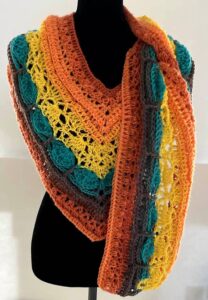Autistic people are often visual thinkers. It is not something we decide, but rather the way our brain handles information. We do not know when we are little that most other people think with words rather than with colors and pictures. This makes it difficult in school as delivery of information quickly becomes language based as pictures drop away after the first few years.
This dramatic change in materials in the United States occurs at the third grade level when text based instruction becomes predominant. For me, it was hard to think about or understand ideas that were not concrete ideas. Basically, if my brain could not translate the words I heard into a concrete picture in a few seconds, as a young child, I would not be able to pick up the meaning of the words being spoken. Even though I did not understand the meaning I was able to repeat the words. For example, when prompted I could repeat the teacher’s instruction to use quiet voices even though I had no idea what the words meant because no picture popped up in my head to equal those words.
-
-
- Is your student a visual thinker?
- Do you use concrete language along with pictures as needed?
-
Non-Compliance or Comprehension Constraint?
When autistics are able to recite your instructions or repeat an admonition and then do not follow the instruction or admonition do not assume willful non-compliance. Instead, check for comprehension. If the autistic is a visual thinker ask him what the rule or instructions look like , to draw it, or to show you. If a visual thinker cannot do this, he likely does not comprehend the words you are speaking even though he may be able to repeat them quite accurately. And even when he replies, “yes” to your inquiry of whether he understands please check for comprehension because we learn early on that “yes” is the correct and expected answer to that particular question!
Research Findings
Numerous research findings over the years have shown that autistic children have been shown to basically be normal for age in word decoding, but lower than age expectation in reading comprehension (Minshew, et. al. (1994), Myles, et. al. (2002), Nation, et. al, (2006), Newman, et. al. (2007), Asberg, et. al. (2008), Asberg, et. al. (2010).
- When your student’s behavior has the appearance of willful noncompliance do you stop to ascertain comprehension before ascribing meaning to the behavior?
- How will you evaluate your student’s comprehension or lack of comprehension?
Selection from Autistically Thriving: Reading Comprehension, Conversational Engagement,
and Living a Self-Determined Life Based on Autistic Neurology, pgs.46-47.
Note: The author is a mental health therapist and is also autistic. She iintentionally uses identity-first language (rather than person-first language), and invites the reader, if interested, to do further research on the preference of most autistic adults to refer to themselves using identity-first language
BOOKS BY JUDY ENDOW
Endow, J. (2021). Executive Function Assessment. McFarland, WI: Judy Endow.
Endow, J. (2019). Autistically Thriving: Reading Comprehension, Conversational Engagement, and Living a Self-Determined Life Based on Autistic Neurology. Lancaster, PA: Judy Endow.
Endow, J. (2012). Learning the Hidden Curriculum: The Odyssey of One Autistic Adult. Shawnee Mission, KS: AAPC Publishing.
Endow, J. (2006). Making Lemonade: Hints for Autism’s Helpers. Cambridge, WI: CBR Press.
Endow, J. (2013). Painted Words: Aspects of Autism Translated. Cambridge, WI: CBR Press.
Endow, J. (2009b). Paper Words: Discovering and Living With My Autism. Shawnee Mission, KS: AAPC Publishing.
Endow, J. (2009a). Outsmarting Explosive Behavior: A Visual System of Support and Intervention for Individuals With Autism Spectrum Disorders. Shawnee Mission, KS: AAPC Publishing.
Endow, J. (2010). Practical Solutions for Stabilizing Students With Classic Autism to Be Ready to Learn: Getting to Go. Shawnee Mission, KS: AAPC Publishing.
Myles, B. S., Endow, J., & Mayfield, M. (2013). The Hidden Curriculum of Getting and Keeping a Job: Navigating the Social Landscape of Employment. Shawnee Mission, KS: AAPC Publishing.
.




